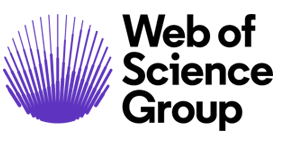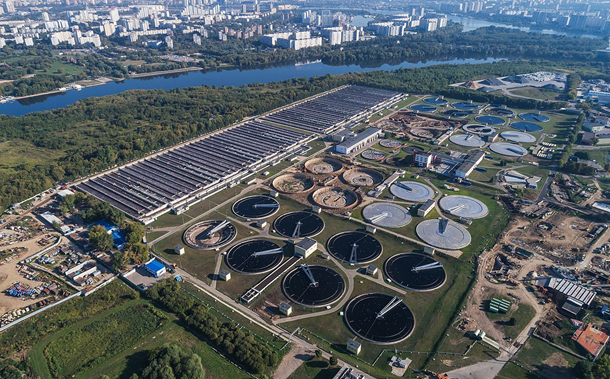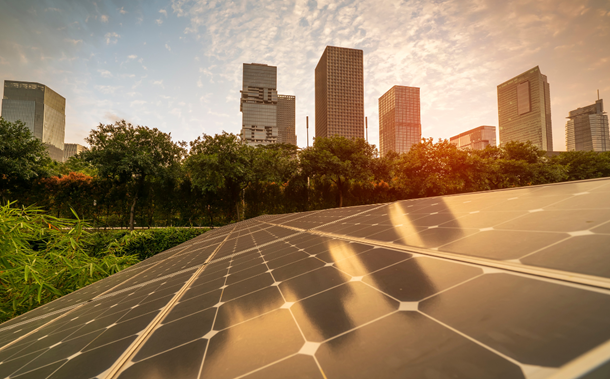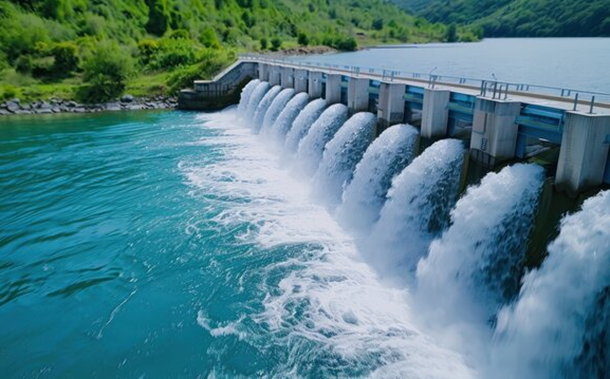Properties and Structure of Functional Concrete Mixtures Modified with River Shell Powder
Downloads
Doi:10.28991/CEJ-2024-010-07-020
Full Text:PDF
Downloads
[2] Jasim, A. M. D. A., Wong, L. S., Kong, S. Y., Al-Zand, A. W., & Midhin, M. A. K. (2023). An Evaluative Review of Recycled Waste Material Utilization in High-Performance Concrete. Civil Engineering Journal (Iran), 9(11), 2927–2957. doi:10.28991/CEJ-2023-09-11-020.
[3] Sinitsin, D. A., Elrefaei, A. E. M. M., Glazachev, A. O., Kuznetsov, D. V., Parfenova, A. A., Volokitina, I. E., Kayumova, E. I., & Nedoseko, I. V. (2023). Study of the characteristics of pavement elements made of reinforced soil with the use of secondary resources. Construction Materials and Products, 6(6), 2. doi:10.58224/2618-7183-2023-6-6-2.
[4] Klyuev, A. V., Kashapov, N. F., Klyuev, S. V., Zolotareva, S. V., Shchekina, N. A., Shorstova, E. S., Lesovik, R. V., & Ayubov, N. A. (2023). Experimental studies of the processes of structure formation of composite mixtures with technogenic mechanoactivated silica component. Construction Materials and Products, 6(2), 5–18. doi:10.58224/2618-7183-2023-6-2-5-18.
[5] Bellei, P., Torres, I., Solstad, R., & Flores-Colen, I. (2023). Potential Use of Oyster Shell Waste in the Composition of Construction Composites: A Review. Buildings, 13(6), 1546. doi:10.3390/buildings13061546.
[6] Beskopylny, A. N., Stel'makh, S. A., Shcherban', E. M., Mailyan, L. R., Meskhi, B., Tyutina, A., Chernil'nik, A., & El'shaeva, D. (2023). The Structure Features and Improvement of Concrete Properties with Dead Jellyfish Mass. Sustainability (Switzerland), 15(24), 16617. doi:10.3390/su152416617.
[7] Cho, E., Kim, J. E., Lee, J., Park, S., Lee, S., Chung, J. H., Kim, J., & Seonwoo, H. (2023). Development of 3D Printable Calcium Phosphate Cement Scaffolds with Cockle Shell Powders. Materials, 16(18), 6154. doi:10.3390/ma16186154.
[8] Mora-Ortiz, R. S., Del Angel-Meraz, E., Díaz, S. A., Munguía-Balvanera, E., Magaña-Hernández, F., Alavez-Ramírez, J., Pantoja Castro, M. A., & Torres-Hernández, J. del R. (2024). The Use of Pre-Wetting to Improve the Mechanical Behavior of Masonry Mortar Elaborated with Crushed Oyster Shell. Sustainability (Switzerland), 16(1), 199. doi:10.3390/su16010199.
[9] Tayeh, B. A., Hasaniyah, M. W., Zeyad, A. M., & Yusuf, M. O. (2019). Properties of concrete containing recycled seashells as cement partial replacement: A review. Journal of Cleaner Production, 237, 117723. doi:10.1016/j.jclepro.2019.117723.
[10] Naik, B., Paul, S., Choudhury, S. K., Sarangi, P. P., Mustakim, S. M., Swar, S. N., Jeet, S., & Jethy, B. (2023). A comprehensive study on utilization of shell wastes in construction industry. Materials Today: Proceedings. doi:10.1016/j.matpr.2023.07.048.
[11] Assaad, J. J., & Saba, M. (2023). Use of Seashell and Limestone Fillers in Metakaolin-Based Geopolymers for Masonry Mortars. Minerals, 13(2), 186. doi:10.3390/min13020186.
[12] El Mendili, Y., & Benzaama, M. H. (2022). Investigation of Mechanical and Thermal Performance of Concrete with Scallop Shells as Partial Cement Replacement: Alternative Binder and Life Cycle Assessment. CivilEng, 3(3), 760–778. doi:10.3390/civileng3030044.
[13] Kim, M. O., & Lee, M. K. (2023). Strength and Microstructural Changes in Cementitious Composites Containing Waste Oyster Shell Powder. Buildings, 13(12), 3078. doi:10.3390/buildings13123078.
[14] Liu, S., Wang, Y., Liu, B., Zou, Z., Teng, Y., Ji, Y., Zhou, Y., Zhang, L. V., & Zhang, Y. (2022). Sustainable Utilization of Waste Oyster Shell Powders with Different Fineness Levels in a Ternary Supplementary Cementitious Material System. Sustainability (Switzerland), 14(10), 5981. doi:10.3390/su14105981.
[15] Liu, S., Zhang, Y., Liu, B., Zou, Z., Liu, Q., Teng, Y., & Zhang, L. V. (2022). Sustainable Use of Waste Oyster Shell Powders in a Ternary Supplementary Cementitious Material System for Green Concrete. Materials, 15(14), 4886. doi:10.3390/ma15144886.
[16] Stel'makh, S. A., Shcherban', E. M., Beskopylny, A. N., Mailyan, L. R., Meskhi, B., Tashpulatov, S. S., Chernil'nik, A., Shcherban', N., & Tyutina, A. (2023). Composition, Technological, and Microstructural Aspects of Concrete Modified with Finely Ground Mussel Shell Powder. Materials, 16(1), 82. doi:10.3390/ma16010082.
[17] Stel'makh, S. A., Shcherban', E. M., Beskopylny, A. N., Mailyan, L. R., Meskhi, B., Beskopylny, N., Dotsenko, N., & Kotenko, M. (2022). Nanomodified Concrete with Enhanced Characteristics Based on River Snail Shell Powder. Applied Sciences (Switzerland), 12(15), 7839. doi:10.3390/app12157839.
[18] Yang, E. I., Yi, S. T., & Leem, Y. M. (2005). Effect of oyster shell substituted for fine aggregate on concrete characteristics: Part I. Fundamental properties. Cement and Concrete Research, 35(11), 2175–2182. doi:10.1016/j.cemconres.2005.03.016.
[19] Luo, K., Zhang, M., Jiang, Q., Wang, S., & Zhuo, X. (2024). Evaluation of using oyster shell as a complete replacement for aggregate to make eco-friendly concrete. Journal of Building Engineering, 84, 108587. doi:10.1016/j.jobe.2024.108587.
[20] Bheel, N., Ali, M. O. A., Kirgiz, M. S., de Sousa Galdino, A. G., & Kumar, A. (2021). Fresh and mechanical properties of concrete made of binary substitution of millet husk ash and wheat straw ash for cement and fine aggregate. Journal of Materials Research and Technology, 13, 872-893. doi:10.1016/j.jmrt.2021.04.095.
[21] Akhtar, M. N., Husein Malkawi, D. A., Bani-Hani, K. A., & Husein Malkawi, A. I. (2023). Durability Assessment of Sustainable Mortar by Incorporating the Combination of Solid Wastes: An Experimental Study. Civil Engineering Journal (Iran), 9(11), 2770–2786. doi:10.28991/CEJ-2023-09-11-09.
[22] Jhatial, A. A., Goh, W. I., Mastoi, A. K., Rahman, A. F., & Kamaruddin, S. (2021). Thermo-mechanical properties and sustainability analysis of newly developed eco-friendly structural foamed concrete by reusing palm oil fuel ash and eggshell powder as supplementary cementitious materials. Environmental Science and Pollution Research, 28, 38947-38968. doi:10.1007/s11356-021-13435-2.
[23] Dharmalingam, S., & Sasikumar, T. (2023). Mechanical, wear, and flammability properties of silanized cow dung biosilica-dispersed corn husk Fiber-reinforced epoxy composites. Biomass Conversion and Biorefinery, 1-11. doi:10.1007/s13399-023-05082-z.
[24] Dong, Q., Cao, X., Wang, S., Chen, X., Yang, B., Xie, S., & Cheng, Z. (2023). Design and evaluation of an innovative composite silicate-based surface treatment agent of concrete. Case Studies in Construction Materials, 18, 2207. doi:10.1016/j.cscm.2023.e02207.
[25] Alanazi, H. (2022). Study of the Interfacial Transition Zone Characteristics of Geopolymer and Conventional Concretes. Gels, 8(2), 105. doi:10.3390/gels8020105.
[26] Liao, Y., Wang, X., Wang, L., Yin, Z., Da, B., & Chen, D. (2022). Effect of waste oyster shell powder content on properties of cement-metakaolin mortar. Case Studies in Construction Materials, 16, 1088. doi:10.1016/j.cscm.2022.e01088.
[27] Zhang, Y., Zhang, S., Nie, Q., Shen, L., & Wang, W. (2023). Mechanical Properties and Microscopic Mechanism of a Multi-Cementitious System Comprising Cement, Fly Ash, and Steel Slag Powder. Materials, 16(22), 7195. doi:10.3390/ma16227195.
[28] Medyanik, Y. V. (2013). The study of character of cement stone neoplasms during the hardening in the presence of carbonate filler. Izvestiya KGASU, (4), 26.
[29] Ge, J., Xu, F., Wei, H., Wang, Q., Peng, H., Zhou, J., & Li, H. (2023). The Influence Mechanism of Interfacial Characteristics between CSH and Montmorillonite on the Strength Properties of Cement-Stabilized Montmorillonite Soil. Materials, 16(22), 7141. doi:10.3390/ma16227141.
[30] PrŠ¯Š¡a, D., Š Š¥astník, S., Š uhajda, K., Svobodová, K., Š½ajdlík, T., Hobzová, K., & Novotní½, M. (2023). The Effect of Microwave Radiation on the Solidification of C-S-H Gels: Its Influence on the Solidified Cement Mixtures. Gels, 9(11), 889. doi:10.3390/gels9110889.
[31] Aruntaş, H. Y., Nallı, E., & Kaplan, G. (2022). Usage of ready-mixed concrete plant wastewater in concrete with superplasticizer: Effect on physico-mechanical properties. Construction and Building Materials, 348, 128641. doi:10.1016/j.conbuildmat.2022.128641.
[32] Shetty, P. P., Rao, A. U., Pai, B. H. V., & Kamath, M. V. (2023). Performance of High-Strength Concrete with the Effects of Seashell Powder as Binder Replacement and Waste Glass Powder as Fine Aggregate. Journal of Composites Science, 7(3), 92. doi:10.3390/jcs7030092.
[33] Zhao, X., Wu, Q., Akbar, M., Yin, R., Ma, S., & Zhi, Y. (2023). Effects of Marine Shellfish on Mechanical Properties and Microstructure of Coral Concrete. Buildings, 13(9), 2193. doi:10.3390/buildings13092193.
[34] Shao, S., Zhu, H., Guo, M., & Zhang, Y. (2024). Application of waste oyster shells in construction: Overview, constitutive modeling, and life cycle assessment. Journal of Building Engineering, 87, 108965. doi:10.1016/j.jobe.2024.108965.
[35] Hamada, H. M., Abed, F., Tayeh, B., Al Jawahery, M. S., Majdi, A., & Yousif, S. T. (2023). Effect of recycled seashells on concrete properties: A comprehensive review of the recent studies. Construction and Building Materials, 376. doi:10.1016/j.conbuildmat.2023.131036.
[36] Chen, B., Peng, L., Zhong, H., Zhao, Y., Meng, T., & Zhang, B. (2023). Synergetic recycling of recycled concrete aggregate and waste mussel shell in concrete: Mechanical properties, durability and microstructure. Construction and Building Materials, 371, 130825. doi:10.1016/j.conbuildmat.2023.130825.
[37] Santos, M. M., Lanzinha, J. C. G., & Vaz Ferreira, A. T. (2024). Case study V: Mollusk shells to replace conventional aggregates in concrete. Materials Selection for Sustainability in the Built Environment, 443–463, Woodhead Publishing, Swanston, United Kingdom. doi:10.1016/b978-0-323-95122-7.00020-4.
[38] Sangeetha, P., Shanmugapriya, M., Santhosh Saravanan, K., Prabhakaran, P., & Shashankar, V. (2022). Mechanical properties of concrete with seashell waste as partial replacement of cement and aggregate. Materials Today: Proceedings, 61(2), 320–326. doi:10.1016/j.matpr.2021.09.501.
[39] Maglad, A. M., Othuman Mydin, M. A., Dip Datta, S., & Tayeh, B. A. (2023). Assessing the mechanical, durability, thermal and microstructural properties of sea shell ash based lightweight foamed concrete. Construction and Building Materials, 402, 133018. doi:10.1016/j.conbuildmat.2023.133018.
[40] Wu, Y., Lu, J., Nie, Y., & He, W. (2024). Effect of seashell powder as binder material on the performance and microstructure of low-carbon sustainable alkali-activated concrete. Journal of Building Engineering, 90, 109442. doi:10.1016/j.jobe.2024.109442.
[41] Beskopylny, A. N., Stel'makh, S. A., Shcherban', E. M., Mailyan, L. R., Meskhi, B., Beskopylny, N., El'shaeva, D., & Kotenko, M. (2022). The Investigation of Compacting Cement Systems for Studying the Fundamental Process of Cement Gel Formation. Gels, 8(9), 530. doi:10.3390/gels8090530.
[42] Beskopylny, A. N., Stel'makh, S. A., Shcherban', E. M., Mailyan, L. R., Meskhi, B., Varavka, V., Beskopylny, N., & El'shaeva, D. (2022). A Study on the Cement Gel Formation Process during the Creation of Nanomodified High-Performance Concrete Based on Nanosilica. Gels, 8(6), 346. doi:10.3390/gels8060346.
[43] Yadav, V. K., Yadav, K. K., Cabral-Pinto, M. M. S., Choudhary, N., Gnanamoorthy, G., Tirth, V., Prasad, S., Khan, A. H., Islam, S., & Khan, N. A. (2021). The processing of calcium rich agricultural and industrial waste for recovery of calcium carbonate and calcium oxide and their application for environmental cleanup: A review. Applied Sciences (Switzerland), 11(9), 4212. doi:10.3390/app11094212.
[44] Shcherban', E. M., Stel'makh, S. A., Beskopylny, A. N., Mailyan, L. R., Meskhi, B., Elshaeva, D., Chernil'nik, A., Mailyan, A. L., & Ananova, O. (2023). Eco-Friendly Sustainable Concrete and Mortar Using Coal Dust Waste. Materials, 16(19), 6604. doi:10.3390/ma16196604.
[45] Li, L., Wei, Y., Feng, Q., Liu, F., Liu, B., & Pu, B. (2023). A Review: Progress in Molecular Dynamics Simulation of Portland Cement (Geopolymer)”Based Composites and the Interface between These Matrices and Reinforced Material. Buildings, 13(7), 1875. doi:10.3390/buildings13071875.
[46] Mailyan, L. R., Stel'makh, S. A., Shcherban, E. M., Zherebtsov, Y. V., & Al-Tulaikhi, M. M. (2021). Research of physicomechanical and design characteristics of vibrated, centrifuged and vibro-centrifuged concretes. Advanced Engineering Research, 21(1), 5–13. doi:10.23947/2687-1653-2021-21-1-5-13.
[47] GOST 30744-2001. (2002). Cements. Methods of testing with using polyfraction standard sand. Russian Technical Standard, Moscow, Russia. (In Russian).
[48] GOST R 57809-2017/EN 12350-2:2009. (2019). Testing fresh concrete. Part 2. Slump test. Russian Technical Standard, Moscow, Russia. (In Russian).
[49] EN 12390-1:2021. (2021). Testing Hardened Concrete”Part 1: Shape, Dimensions and Other Requirements of Specimens and Moulds. European Committee for Standardization, Brussels, Belgium.
[50] EN 12390-2:2019. (2019). Testing hardened concrete - Part 2: Making and curing specimens for strength tests. European Committee for Standardization, Brussels, Belgium.
[51] N 12390-3:2019. (2019). Testing hardened concrete - Part 3: Compressive strength of test specimens. European Committee for Standardization, Brussels, Belgium.
[52] EN 12390-4:2019. (2019). Testing Hardened Concrete”Part 4: Compressive Strength”Specification for Testing Machines. European Committee for Standardization, Brussels, Belgium.
[53] GOST 12730.3-2020. (2020). Concretes. Method of Determination of Water Absorption. Russian Technical Standard, Moscow, Russia. (In Russian).
[54] BS 1881-122:2011+A1:2020. (2020). Testing Concrete Method for Determination of Water Absorption. British Standards Institution (BSI), London, United Kingdom.
[55] Zhang, Y., Chen, D., Liang, Y., Qu, K., Lu, K., Chen, S., & Kong, M. (2020). Study on engineering properties of foam concrete containing waste seashell. Construction and Building Materials, 260, 119896. doi:10.1016/j.conbuildmat.2020.119896.
[56] Wang, J., & Liu, E. (2020). Upcycling waste seashells with cement: Rheology and early-age properties of Portland cement paste. Resources, Conservation and Recycling, 155, 104680. doi:10.1016/j.resconrec.2020.104680.
[57] Wang, J., Liu, E., & Li, L. (2019). Characterization on the recycling of waste seashells with Portland cement towards sustainable cementitious materials. Journal of Cleaner Production, 220, 235–252. doi:10.1016/j.jclepro.2019.02.122.
[58] Samchenko, S. V., Alexandrova, O. V., & Gurkin, A. Y. (2020). Properties of cement composites based on limestone depending on their granulometric composition. Vestnik MGSU, 15(7), 999–1006. doi:10.22227/1997-0935.2020.7.999-1006.
[59] Han, Y., Lin, R., & Wang, X. Y. (2022). Performance of sustainable concrete made from waste oyster shell powder and blast furnace slag. Journal of Building Engineering, 47, 103918. doi:10.1016/j.jobe.2021.103918.
[60] Han, Y., Lin, R., & Wang, X. Y. (2022). Sustainable mixtures using waste oyster shell powder and slag instead of cement: Performance and multi-objective optimization design. Construction and Building Materials, 348, 128642. doi:10.1016/j.conbuildmat.2022.128642.
[61] Bamigboye, G. O., Nworgu, A. T., Odetoyan, A. O., Kareem, M., Enabulele, D. O., & Bassey, D. E. (2021). Sustainable use of seashells as binder in concrete production: Prospect and challenges. Journal of Building Engineering, 34, 101864. doi:10.1016/j.jobe.2020.101864.
[62] Mo, K. H., Alengaram, U. J., Jumaat, M. Z., Lee, S. C., Goh, W. I., & Yuen, C. W. (2018). Recycling of seashell waste in concrete: A review. Construction and Building Materials, 162, 751–764. doi:10.1016/j.conbuildmat.2017.12.009.
[63] Li, T., Xin, R., Wang, D., Yuan, L., Wu, D., & Wu, X. (2023). Research Progress on the Applications of Seashell Adsorption Behaviors in Cement-Based Materials. Buildings, 13(5), 1289. doi:10.3390/buildings13051289.
[64] Raghav, M., Karthick, S., Park, T., & Lee, H.-S. (2021). Assessment of Corrosion Performance of Steel Rebar in Snail Shell Ash Blended Cements under Marine Environments. Materials, 14(23), 7286. doi:10.3390/ma14237286.
[65] Hasan, K., Islam, M. T., Ferdaus, R., & Yahaya, F. M. (2023). Experimental study on environment-friendly concrete production incorporating palm oil clinker and cockle shell powder as cement partial replacement. Materials Today: Proceedings. doi:10.1016/j.matpr.2023.11.150.
[66] Jung, S., Heo, N. S., Kim, E. J., Oh, S. Y., Lee, H. U., Kim, I. T., Hur, J., Lee, G. W., Lee, Y. C., & Huh, Y. S. (2016). Feasibility test of waste oyster shell powder for water treatment. Process Safety and Environmental Protection, 102, 129–139. doi:10.1016/j.psep.2016.03.004.
[67] Zhan, J., Lu, J., & Wang, D. (2022). Review of shell waste reutilization to promote sustainable shellfish aquaculture. Reviews in Aquaculture, 14(1), 477–488. doi:10.1111/raq.12610.
[68] Song, Q., Wang, Q., Xu, S., Mao, J., Li, X., & Zhao, Y. (2022). Properties of water-repellent concrete mortar containing superhydrophobic oyster shell powder. Construction and Building Materials, 337, 127423. doi:10.1016/j.conbuildmat.2022.127423.
[69] Wu, H., Xie, Z., Zhang, L., Lin, Z., Wang, S., & Tang, W. (2021). A new magnesium phosphate cement based on renewable oyster shell powder: Flexural properties at different curing times. Materials, 14(18), 5433. doi:10.3390/ma14185433.
- Authors retain all copyrights. It is noticeable that authors will not be forced to sign any copyright transfer agreements.
- This work (including HTML and PDF Files) is licensed under a Creative Commons Attribution 4.0 International License.![]()














